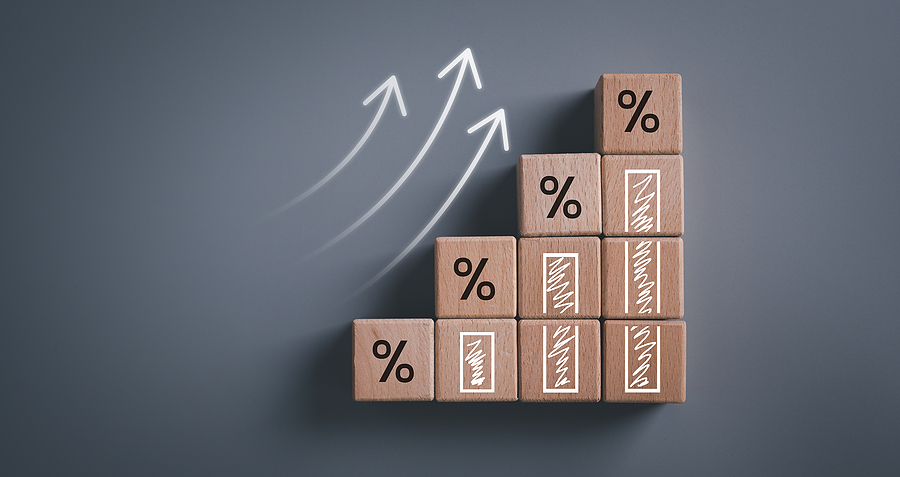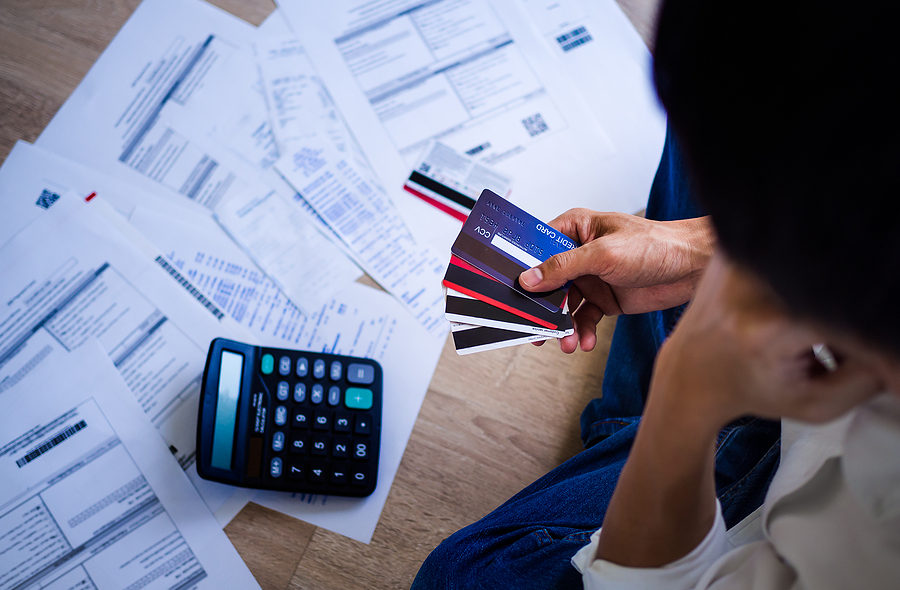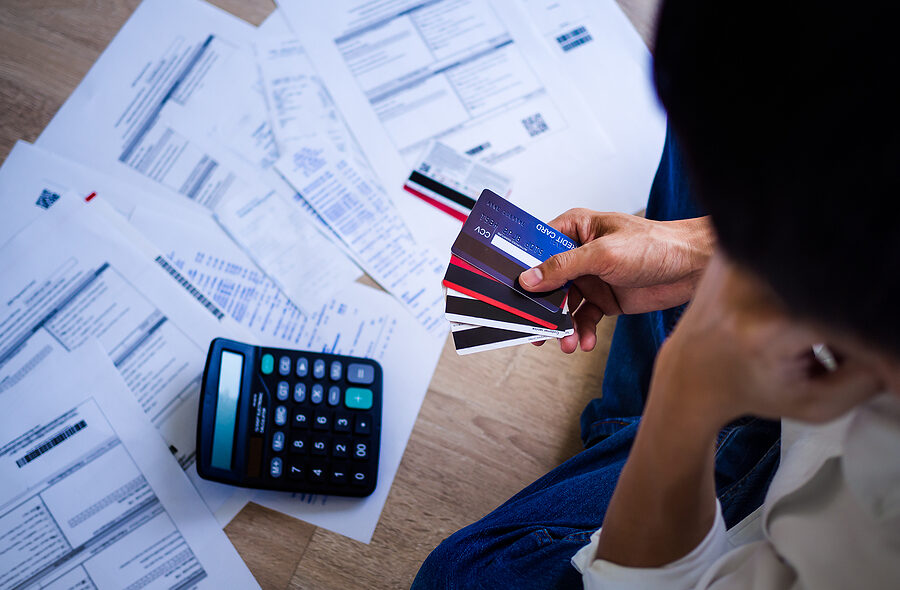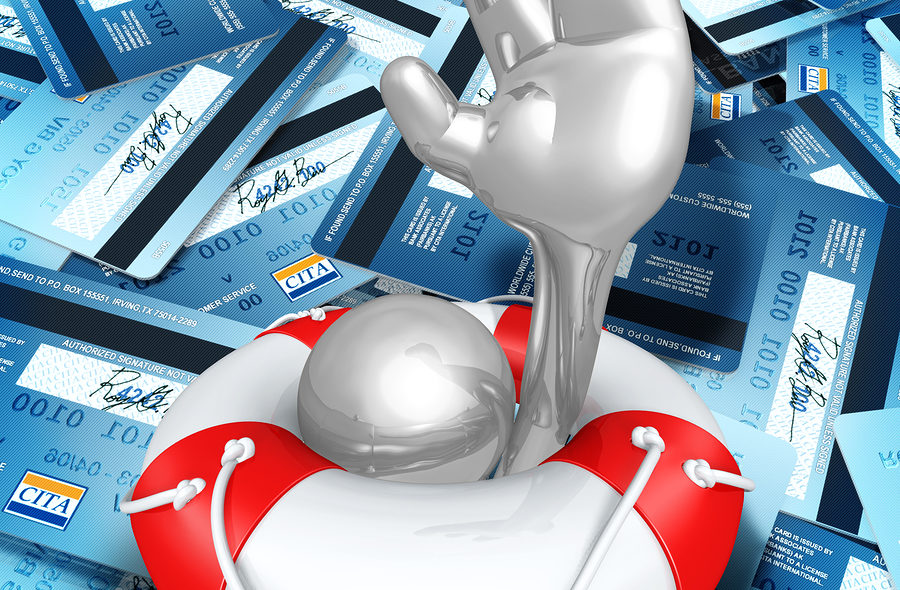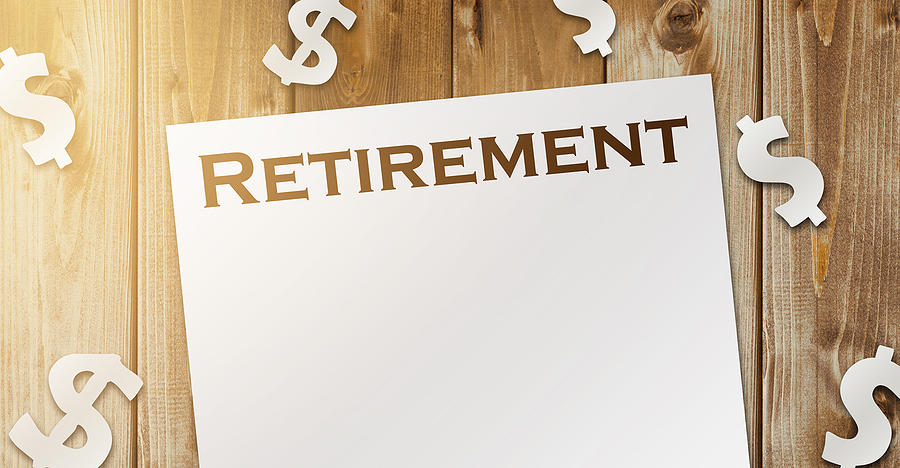Credit card interest rates are anticipated to increase after the Federal Reserve increased its benchmark interest rate an additional three-quarters of a point. For consumers who rely on credit cards to keep up with the increasing costs of gas, groceries, and other necessary expenses, this news does not come at a good time.
Credit Card Debt
Do I Owe Taxes if My Credit Card Debt is Forgiven?
Certain debt forgiveness can come with financial repercussions, especially when it comes to taxes. This cancelled debt includes debt that was significantly reduced through debt settlement negotiations or debt that was completely cancelled or forgiven by the creditor, including credit card debt.
How to Pay Down Credit Card Balances with High Interest Rates
Credit card debt has traditionally been one of the more difficult consumer debts to conquer. This is in large part because most credit card balances come with significantly high interest rates. The larger a consumer’s balance gets, the more difficult it can be to tackle the debt. While paying down credit card debt can be a challenge, however, it is not impossible. It takes proper planning and discipline but paying down a credit card balance on a card with high interest rates is possible.
According to LendingTree, the average annual percentage rate on a new credit card is over 20 percent, and rates only seem to be increasing over time, especially as the cost of living continues to rise. This trend presents a major problem for American consumers with high credit card balances. In fact, according to reports from the Federal Reserve Bank of New York, credit card balances reached a high of $841 billion in the first quarter of 2022.
The Best Ways to Handle Your Credit During Inflation
The cost of living has continued to rise throughout the first half of 2022, leaving many consumers struggling to make ends meet. It seems the cost of everything has skyrocketed, from groceries to gas. As a result, three in five American consumers say they are living paycheck to paycheck. Many of these individuals are relying on credit cards to pay for necessary expenses, but unfortunately, adding to their credit card debt only complicates financial problems.
Seventy-Five Percent of Americans Have Missed Credit Card Payments Due to COVID-19 Pandemic
The COVID-19 pandemic has pushed many Americans into financial struggles. The disruption to employment, childcare, and school routines crippled the economy and forced millions of women and families to the financial brink. While many have bounced back, others continue to struggle.
According to a new survey from Forbes Advisor, 75 percent of American consumers have reported missing payments or making a late payment at least once on their credit cards due to the COVID-19 pandemic.
Consumer Debt Reaches a Record-Breaking $15.6 Trillion
Consumer debt hit an all-time high at the end of 2021, reaching a total of $15.6 trillion. According to figures from the Federal Reserve New York district, this figure represents a year-over-year increase of $333 billion during the fourth quarter of 2021, as well as a $1 trillion increase for the entire year.
This quarterly consumer debt increase is the largest one seen since 2007. Looking at it from an annual perspective, this increase is the largest one since 2003.
Red Flags That Indicate Dangerous Credit Card Habits
Credit card spending can quickly become a bad habit that can get out of control. Certain behaviors can end up dragging the consumer deeper into debt. It is important that the consumer identify these spending habits ahead of time and spot red flags before falling deeper into a debt trap.
Many consumers fall into the trap of only making the minimum monthly payment listed on their credit card statements. It can be tempting to make that small payment instead of paying off the balance in full or making at least a substantial payment towards the principal. However, minimum monthly payments only end up covering the interest accrued during that month. In the end, the consumer makes absolutely no progress towards paying down the balance owed, and the consumer will find that the balance never goes down. At the very least, the consumer should make more than the minimum payment on a monthly basis in order to avoid falling into this debt trap.
Recent Study Reveals the Burden Debt Has on Mental Health
Carrying any amount of debt can be stressful, but carrying substantial amounts of debt can be debilitating to a consumer’s emotional well-being. Debt can cause anxiety and depression, and the longer a person carries it, the more likely he or she will feel physical and emotional effects from it. A recent study highlighted just how severe the effects of insurmountable debt can be.
The data reviewed comes from the 2021 BC Consumer Debt Study released by BC Licensed Insolvency Trustees Sands & Associates. They surveyed over 1,700 consumers throughout British Columbia who declared personal bankruptcy or legally consolidated a debt.
The survey noted two specific trends regarding consumer debt. The largest proportion, approximately 32 percent, of people who responded to the survey said that they had had $25,000 to $49,999 of debt, not including mortgages or car loans.
Four out of five surveyed said they found that the main causes of their debt were completely outside of their control. For example, 18 percent reported that their debt grew to the amount it was due to them needing to rely on credit to pay for essential costs of living that their income could not cover. Additionally, others reported that their debt was caused by other issues outside of their control, such as illness or health-related problems, the breakdown of a marriage or relationship, and job-related issues.
Of the consumers surveyed, more than 56 percent of them said that credit card debt was their largest source of debt before they entered formal proceedings to eliminate their debts. Payday loans were the main source of debt for approximately six percent of those polled.
Individuals surveyed reported that being in such deep debt negatively affected their well-being. In terms of emotional well-being, 77 percent said their mental health suffered. Four out of five individuals said they constantly worried about being in debt. Three in four surveyed said debt caused them anxiety.
Even more concerning, one in six individuals surveyed said that the stress of carrying large amounts of debt resulted in them contemplating or thinking of suicide.
Mental health was not the only thing affected by debt. Fifty-three percent said that their physical health likewise suffered.
One major issue occurs when the consumer is not truly aware of how much he or she actually owes, resulting in the individual’s finances spiraling out of control. The stress that results from this debt can be debilitating to the person’s mental well-being. Approximately 68 percent reported that they concluded that debt was a major problem when it became a source of major stress in their lives. Sixty percent (60%) said they realized debt was a problem when they could only make minimum payments, while fifty percent (50%) said they realized debt was a major problem when their balances never went down from month to month. Unfortunately, at that point, their debt had grown to a figure that they could not control, forcing them into either bankruptcy or other sources of debt relief.
For more information, the full study can be accessed here.
If you have questions on this topic or are in financial crisis and considering filing for bankruptcy, contact an experienced Miami bankruptcy attorney who can advise you of all of your options. As an experienced CPA as well as a proven bankruptcy lawyer, Timothy Kingcade knows how to help clients take full advantage of the bankruptcy laws to protect their assets and get successful results. Since 1996 Kingcade Garcia McMaken has been helping people from all walks of life build a better tomorrow. Our attorneys’ help thousands of people every year take advantage of their rights under bankruptcy protection to restart, rebuild and recover. The day you hire our firm, we will contact your creditors to stop the harassment. You can also find useful consumer information on the Kingcade Garcia McMaken website at www.miamibankruptcy.com.
How Your Credit Card Debt Can Hurt Your Retirement Savings
Credit card debt presents a challenge for many Americans. This type of debt comes with higher interest rates and lack any potential tax benefits. Credit card debt should essentially ‘retire’ before you do, because it can eat into your savings and reduce your standard of living.
While paying down debt is important, saving for retirement should not be overlooked. Many times, consumers want to focus all their efforts on paying down outstanding debts, saying that they will start saving for retirement once they conquer their debts. By doing this, however, the consumer misses out on the returns that could be made on any money invested in his or her 20s and 30s. For example, if the consumer begins saving $200 a month, starting at age 20, he or she would likely have around $550,000 to $600,000 saved at an annual return rate of 6.5 percent. If he or she waited until he or she was 25 to save, that person would only end up with $435,000 at retirement.
The problem with credit card debt is the high interest rates, which can make paying a large balance off extremely difficult. Often, consumers will only end up paying the minimum amount owed from month-to-month, which only covers the interest that accrued from the prior month. This method not only prolongs paying off the credit card, but it also delays being able to set aside any money for savings for the future. For someone with a credit card balance of $6,300, carrying an interest rate of 17 percent, paying the minimum payments alone could mean it will take the individual 18 years to fully pay off the card.
The key is to learn how to do a combination of both, saving for retirement and putting enough money towards paying down debts. Not all consumers are able to pay balances off in full, but they should at least make more than the minimum monthly amount owed. Any additional amount will help towards paying down the principal. At the same time, any amount the consumer is able to put away towards retirement savings helps, even if the amount seems small. Savings of any amount is better than the alternative of not saving at all. As more and more debts are paid off, the consumer can take what he or she was using towards outstanding debt and put that amount towards retirement savings. Any amount of progress is better than no progress at all.
How are retirement accounts protected in bankruptcy?
The Federal Bankruptcy Code and Florida bankruptcy exemptions extend protection to various types of individual retirement accounts (IRAs) during a bankruptcy. This protection was solidified in 2005 with President George W. Bush signing the Bankruptcy Abuse Prevention and Consumer Protection Act (BAPCPA) into law.
Traditional IRAs and Roth IRAs are protected up to $1 million in value. The precise amount protected is currently $1,362,800. Adjustments are made every three years for inflation with the next one anticipated in 2022. The BAPCPA also states that bankruptcy courts have the discretion to extend additional protection to cover more than the amount allowed under the exemption.
Please click here to read more.
If you have questions on this topic or are in financial crisis and considering filing for bankruptcy, contact an experienced Miami bankruptcy attorney who can advise you of all of your options. As an experienced CPA as well as a proven bankruptcy lawyer, Timothy Kingcade knows how to help clients take full advantage of the bankruptcy laws to protect their assets and get successful results. Since 1996 Kingcade Garcia McMaken has been helping people from all walks of life build a better tomorrow. Our attorneys’ help thousands of people every year take advantage of their rights under bankruptcy protection to restart, rebuild and recover. The day you hire our firm, we will contact your creditors to stop the harassment. You can also find useful consumer information on the Kingcade Garcia McMaken website at www.miamibankruptcy.com.
Paying Off Credit Card Debt? Avoid Making This Common Mistake.
Paying off credit card debt can be hugely rewarding. Just last year, Americans broke the record for credit card debt paid off, coming in at $83 billion. However, when it comes to paying credit card debt, many Americans make a mistake that can have a lasting effect on their credit scores.
In an effort to avoid amassing greater debt while preparing to pay off the existing debt, many will halt the use of their credit cards. This can result in the closing of your credit card account due to inactivity. When a credit card account is closed, your credit report can seriously suffer. This is due to the debt-to-credit ratio. This metric represents the amount of credit utilized versus what credit is available for the consumer. When losing a line of credit due to inactivity, your available credit declines and the distance between what is used and what is available increases.

